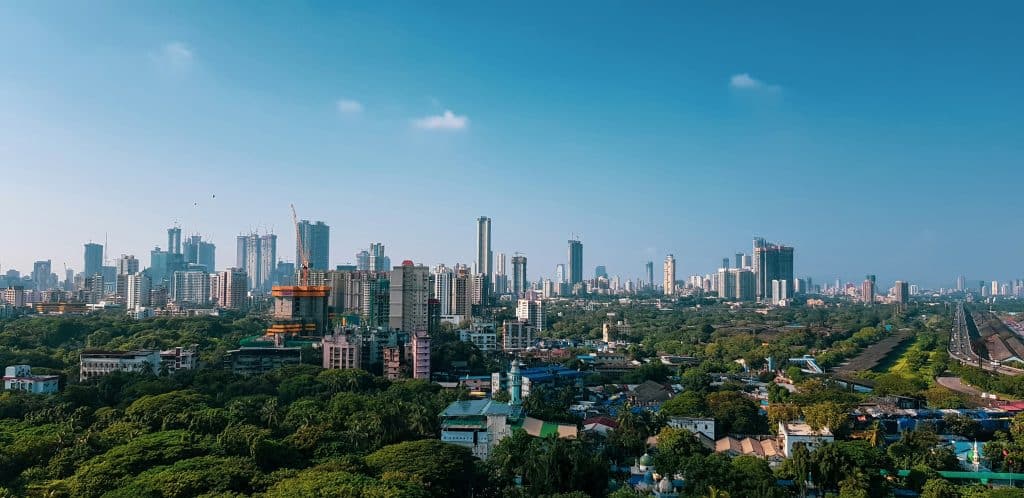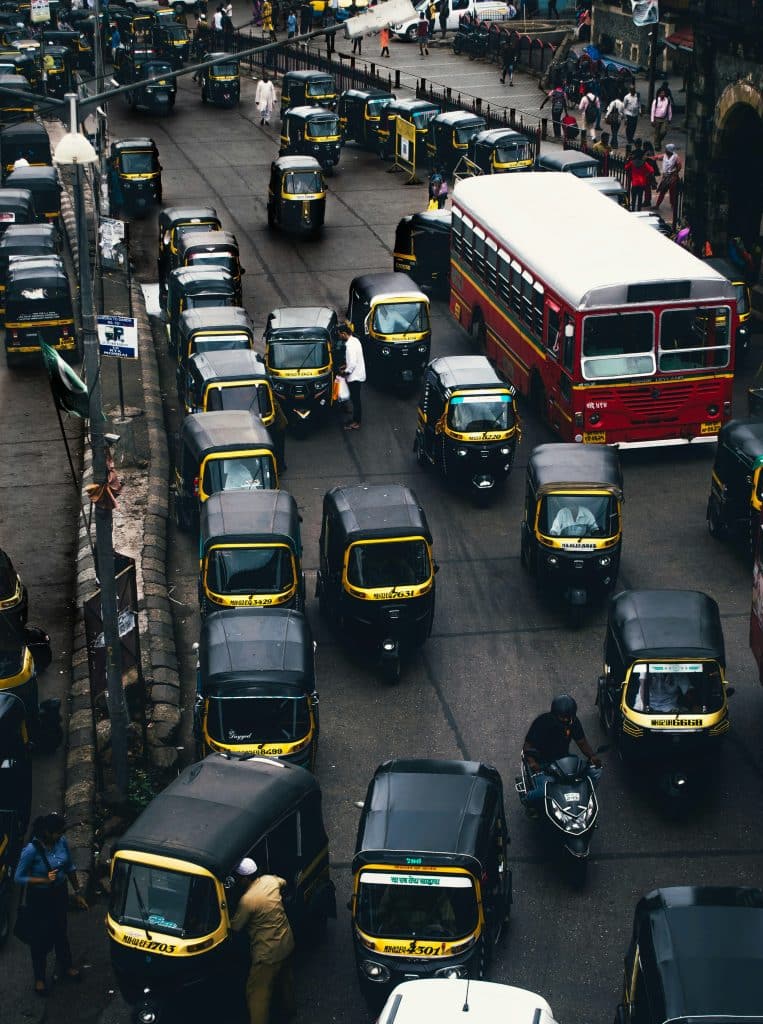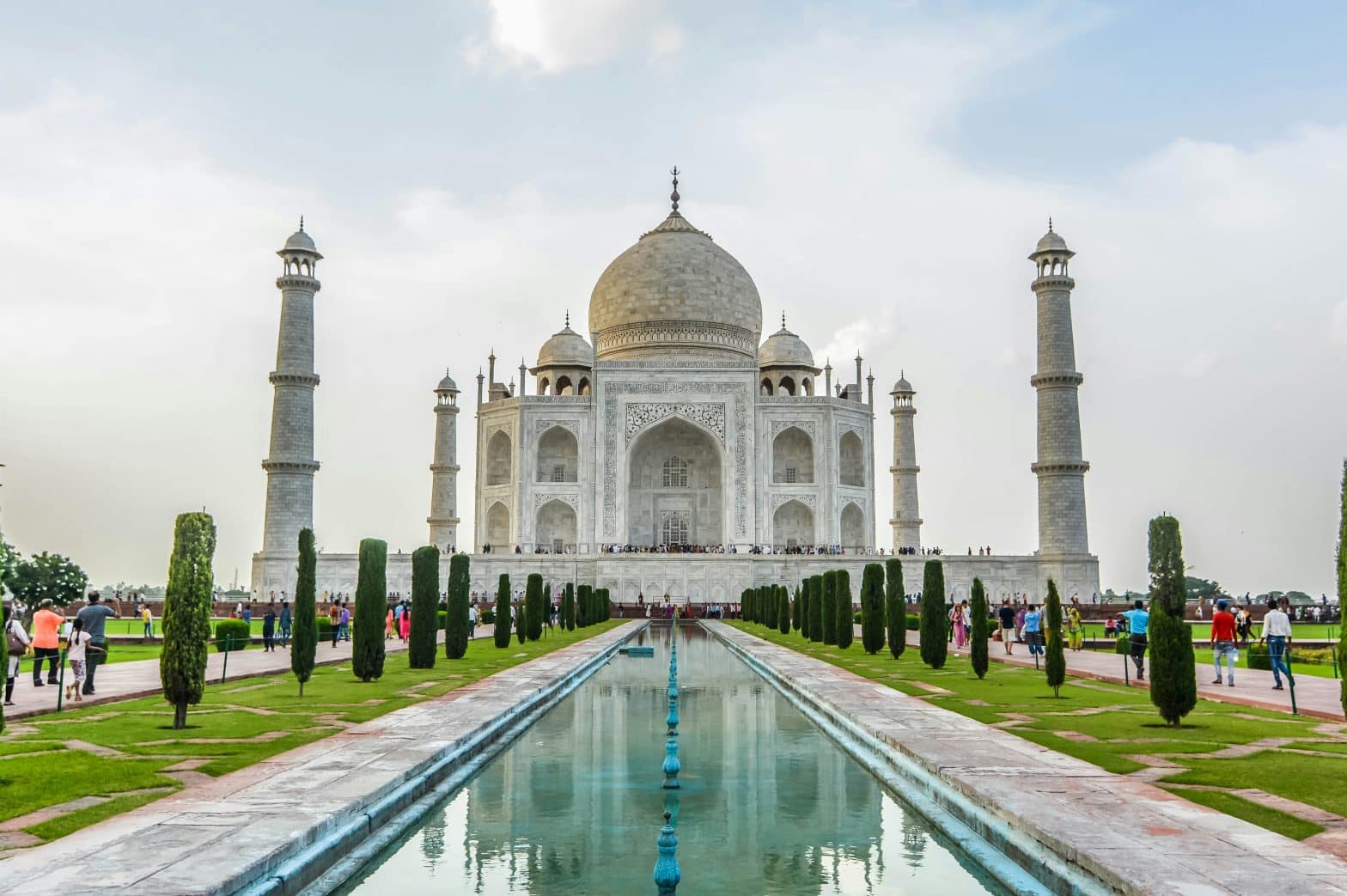Whether you want to move to India for work or because you fell in love with the country during a trip, it is essential to know the cost of living there. India is 70% cheaper than France and 78% cheaper than the United Kingdom.
In this guide, we outline all the expenses you can expect, amongst them the housing budget, grocery prices, medical expenses, transport costs … here’s everything you need to know about the cost of living in India!
Overview of the average cost of living in India
A single person living in India should budget for €400 per month, including rent. For a family of four, this budget rises to €1,500 per month.
| Expenses | Average price |
|---|---|
| Average monthly salary | €285 |
| Rental price for an apartment in the city centre | €145/month |
| Purchase price for an apartment in the city centre | €1,275 per m² |
| Petrol (1L) | €0.99 |
| Monthly mobile phone plan (calls and 10 GB+ of data) | €3.25 |
| Taxi fare per km | €0.25 |
| Meal for two in a mid-range restaurant | €11.55 |
India remains the 7th largest country in the world, divided into 28 states and 8 territories. The cost of living can vary considerably from one Indian city to another.
Life is more expensive in the country’s major cities, including Mumbai (Bombay), Gurugram, Pune, Delhi and Bangalore (Bengaluru). This is due to several factors, including the fact that some states are major economic hubs with high demand for housing.
For example, a person living in Mumbai needs around €800 per month.
To give you a better idea, here is Numbeo’s ranking of the most expensive Indian cities, calculated on the basis of the main items of expenditure (housing, transport, shopping, health, etc.):
- Mumbai : 26,3
- Gurugram : 24,7
- Pune : 23,3
- Delhi : 22,5
- Bangalore : 22,4
- Noida : 22
- Hyderabad : 21,8
Currency and exchange rates in India
The official currency in India is the Indian rupee, abbreviated INR and represented by the symbol ‘₹’. Currently, 104 Indian rupees are equivalent to 1 euro and 88.10 Indian rupees to 1 US dollar (indexes as of 12 September 2025). Foreign currency can be exchanged at bureaux de change or banks.
Please note: Travellers, including expatriates, must declare any amount exceeding €8,450 (USD 10,000) upon arrival at the airport.
Housing prices in India
In India, the rent for a studio apartment in the city centre is INR 15,120 (€145) per month and for a three-bedroom apartment INR 34,400 (€330) per month.

To become a homeowner, the national price per square metre is INR 132,900 (€1,275).
Cost of housing by city
Here are the average prices you can expect to pay for housing in the main Indian cities popular with expatriates (in euros):
| Type of housing | Mumbai | Bengaluru | Pondichéry | Delhi | Chennai | Goa |
|---|---|---|---|---|---|---|
| Studio in the city centre | 555 € | 275 € | 200 € | 200 € | 150 € | 200 € |
| Studio on the outskirts | 300 € | 160 € | 80 € | 150 € | 100 € | 190 € |
| 3-bedroom flat in the city centre | 1 500 € | 730 € | 400 € | 500 € | 340 € | 360 € |
| 3-bedroom flat outside the city centre | 700 € | 455 € | 200 € | 300 € | 220 € | 300 € |
| Purchase price per m² | 2 600 à 5 700 € | 930 à 1 780 € | 310 à 900 € | 1 000 à 1 730 € | 700 à 1 300 € | 500 à 1 000 € |
If you don’t know which city to settle in yet, check out our comprehensive guide to living in India. We cover the cities and neighbourhoods most popular with expats.
Monthly energy costs
In addition to the cost of accommodation itself, you will need to budget for monthly electricity, gas and water bills. On average, these costs range from INR 2,085 to INR 9,900 (€20 to €95), depending on the size of your home and your consumption.
Here are some additional details:
- Household electricity price: €0.059/kWh
- Household gas price: €0.044/kWh
Food budget
Groceries and eating out are the main expenses for expats. However, prices remain well below those in Europe.
Here is a quick overview of the average cost of basic food items:
| Food item | Average price in India |
|---|---|
| Milk (1 L) | €0.60 |
| Water (1,5L) | €0.28 |
| Bread (500 g) | €0.40 |
| Dozen eggs | €0.80 |
| Local cheese (1 kg) | €4.35 |
| Chicken breast (1 kg) | €2.60 |
| Red meat (1 kg) | €4.85 |
| Apples (1 kg) | €1.80 |
| Bananas (1 kg) | €0.60 |
| Tomatoes (1 kg) | €0.45 |
| Potatoes (1kg) | €0.33 |
| Onions (1kg) | €0.40 |
| Pepsi or Coke (330ml bottle) | €0.35 |
| Local beer (500ml bottle) | €1.55 |
| Imported beer (330 ml bottle) | €2.50 |
When eating out, expect to pay the following average prices:
- Fast food meal: €3.50
- Lunch at a mid-range Indian restaurant: €6
- Local dish in a small shop: €2
- Two cappuccinos in a café: €3
These prices can be up to a third higher in large cities such as Mumbai and New Delhi.
Transport prices
Unsurprisingly, with over a billion inhabitants, transport in India is often crowded, but there are many options and prices are very affordable.
Metro prices: India’s major cities have metro lines (Kolkata, Delhi, Mumbai, Chennai, Hyderabad, Jaipur, etc.) that cost between INR 10 and INR 60 (€0.095 to €0.60) per ticket.
Bus fares: Bus fares average between 5 and 25 INR (€0.048 to €0.25) for urban or interurban journeys.
Train fares: Trains are the preferred mode of transport for long distances, and fares depend on the destination. For example, for a journey between Delhi and Mumbai, the ticket price ranges from 630 to 3,950 INR (€6 to €38).
Taxi fares: For a taxi, the starting price is 80 INR (€0.77), followed by a fare of 26 INR (€0.25) per kilometre travelled.
Rickshaw prices: These famous ‘tuk-tuks’ are very common for short trips in the city. Expect to pay between 10 and 20 INR per trip, or less than 20 euro cents.
Air travel prices: Domestic flights are common, especially when travelling from one state to another. For a return trip in economy class between Kolkata and Goa, expect to pay INR 10,200 (€98) in low season with Air India.

Car travel prices: Finally, drivers can also travel in their own vehicles, with a full tank costing around INR 100 (€0.99) per litre of petrol. However, it can be difficult to drive in India when you first arrive. It takes some time to adapt, as the road infrastructure is often substandard, traffic jams are frequent, and the highway code is (unfortunately) not always respected.
Healthcare costs
| Medical services | Average price in India |
|---|---|
| Consultation with a general practitioner | 300 INR (€2.88) |
| Consultation with a specialist | 700 INR (€6.70) |
| Consultation with a specialist | 800 INR (€7.70) |
| Dental implant | 35,000 INR (€335) |
| Childbirth in a private hospital | 85,000 INR (€815) |
It is important to note that India’s healthcare system is a mixed system, relying on both the public and private sectors. Public healthcare is very affordable, but waiting times are generally long and the quality of care provided can sometimes be limited. It is mainly local residents who use this system.
Expatriates take out private insurance, which gives them access to quality care in recognised medical facilities.
As an expatriate, you can opt for international health insurance, such as that offered by Foyer Global Health. As specialists in health cover for expatriates and their families, we offer tailor-made solutions adapted to your lifestyle.
With our insurance, you can:
✔️Be covered everywhere, in India, in your home country or elsewhere
✔️Access quality care at the hospital or clinic of your choice
✔️Benefit from reduced waiting times
✔️Take advantage of a teleconsultation service to obtain a second opinion or if you have any questions
You can also benefit from additional wellness services, such as mental health coaching or a fitness programme.
Cost of education
If you are planning to move abroad with your family, you can enrol your children in different types of schools, with fees ranging from a few hundred to several thousand pounds per year.
Here are a few examples:
- Private nursery school: expect to pay €100 to €150 per month for one child
- International primary school: around €1,500 per year
- The British School, New Delhi: around €5,808–€9,328
- Shrewsbury International School, Bhopal: annual tuition approx. €23,100; one-time admission fee €3,300; security deposit €2,200; application fee €165
- King’s College India, Rohtak Day-student fees lower primary €1,980; upper boarding €9,900; registration fee €110; admission fee €550
- The Doon School (private school for boys): €16,395 per year
Leisure and activities
There are so many activities and leisure pursuits in India that it is impossible to mention them all. Between the bustling neighbourhoods of the big cities, the architectural treasures and the natural wonders, a whole lifetime would not be enough to discover everything!
However, here are a few must-sees with an idea of the prices:
- Visit Jaipur, the famous pink city of Rajasthan: expect to pay an average of INR 3,100 to 20,800 (€30 to €200) per night depending on the hotel and season. You can visit the City Palace for INR 1,000 (€ 9.60) per person, or Amber Fort for INR 500 (€4.80) per person.
- Discover the Red Fort in New Delhi: INR 600 (€5.75) per person.
- Admire the Taj Mahal (INR 1,100, or €10.55) at least once in your life, as well as Agra Fort (INR 650, or €6.25), located right next door!
- Go on a safari in Ranthambore National Park: INR 4,000 (€39) per person.
Cost of living in India compared to the UK
Living in India costs on average 70% less than in the UK. All expenses are lower: housing, shopping, transport, healthcare, etc.
This difference is reduced in certain residential or upmarket neighbourhoods of large Indian cities, where prices can be similar to those in British cities. It all depends on your lifestyle.
Purchasing power and average salaries are still higher in the UK. However, expatriates often earn more than the Indian average, which allows them to enjoy a certain standard of living in India.
Cost of living in India compared to other Asian countries
India is considered one of the cheapest countries in Asia. In the latest Numbeo ranking, it ranks 43rd out of 44, just ahead of Pakistan.
By way of comparison, a family needs around €2,600 per month to live in China, compared to just €1,500 in India.
But remember: depending on your lifestyle, the budget you need in India may be much higher.
